Changing Oil Filter yourself – manuals and video tutorials
Changing Oil Filter: step-by-step guides
Most viewed video tutorials on the installation of Oil Filter
 How to change the engine oil and oil filter on a car | Tips from AUTODOC
How to change the engine oil and oil filter on a car | Tips from AUTODOC How to change engine oil and oil filter on OPEL ASTRA H [TUTORIAL AUTODOC]
How to change engine oil and oil filter on OPEL ASTRA H [TUTORIAL AUTODOC] How to change oil filter and engine oil on BMW 3 (E90) [TUTORIAL AUTODOC]
How to change oil filter and engine oil on BMW 3 (E90) [TUTORIAL AUTODOC] How to change oil filter and engine oil on MINI COOPER 1 (R50, R53) [TUTORIAL AUTODOC]
How to change oil filter and engine oil on MINI COOPER 1 (R50, R53) [TUTORIAL AUTODOC] How to change oil filter and engine oil on NISSAN QASHQAI j10 [TUTORIAL AUTODOC]
How to change oil filter and engine oil on NISSAN QASHQAI j10 [TUTORIAL AUTODOC] How to change engine oil and oil filter NISSAN X-TRAIL T30 TUTORIAL | AUTODOC
How to change engine oil and oil filter NISSAN X-TRAIL T30 TUTORIAL | AUTODOC How to change Engine Oil and Oil filter on HONDA JAZZ 1 TUTORIAL | AUTODOC
How to change Engine Oil and Oil filter on HONDA JAZZ 1 TUTORIAL | AUTODOC How to change Engine Oil and oil filter on BMW X3 E83 TUTORIAL | AUTODOC
How to change Engine Oil and oil filter on BMW X3 E83 TUTORIAL | AUTODOC How to change oil filter and engine oil on MERCEDES VITO W639 [TUTORIAL AUTODOC]
How to change oil filter and engine oil on MERCEDES VITO W639 [TUTORIAL AUTODOC] How to change oil filter and engine oil on TOYOTA AURIS 1 (E150) [TUTORIAL AUTODOC]
How to change oil filter and engine oil on TOYOTA AURIS 1 (E150) [TUTORIAL AUTODOC] How to change Engine Oil and Oil filter on AUDI A4 B7 AVANT TUTORIAL | AUTODOC
How to change Engine Oil and Oil filter on AUDI A4 B7 AVANT TUTORIAL | AUTODOC How to change engine oil and oil filter on BMW X5 E53 TUTORIAL | AUTODOC
How to change engine oil and oil filter on BMW X5 E53 TUTORIAL | AUTODOC How to change Engine Oil and Oil filter on VOLVO XC90 1 TUTORIAL | AUTODOC
How to change Engine Oil and Oil filter on VOLVO XC90 1 TUTORIAL | AUTODOC How to change engine oil and oil filter on MERCEDES-BENZ A W168 TUTORIAL | AUTODOC
How to change engine oil and oil filter on MERCEDES-BENZ A W168 TUTORIAL | AUTODOC![How to change engine oil and oil filter on PEUGEOT 308 I [TUTORIAL AUTODOC]](https://i.ytimg.com/vi/GvXZ1AVa-VQ/mqdefault.jpg) How to change engine oil and oil filter on PEUGEOT 308 I [TUTORIAL AUTODOC]
How to change engine oil and oil filter on PEUGEOT 308 I [TUTORIAL AUTODOC] How to change Engine Oil and Oil filter on FORD FOCUS 2 TUTORIAL | AUTODOC
How to change Engine Oil and Oil filter on FORD FOCUS 2 TUTORIAL | AUTODOC
Replacing Oil Filter: TOP manuals for changing
Video instructions for changing the Oil Filter – playlist by AUTODOC CLUB
 How to change oil filter tutorial | Step-by-step video guide
How to change oil filter tutorial | Step-by-step video guide
Advices on car maintenance
 6 SIGNS OF A BAD FUEL FILTER | AUTODOC tips
6 SIGNS OF A BAD FUEL FILTER | AUTODOC tips How to extend the lifespan of your engine | AUTODOC tips
How to extend the lifespan of your engine | AUTODOC tips Everything you need to know about the oil filter | AUTODOC tips
Everything you need to know about the oil filter | AUTODOC tips How to Prepare Your Car for a Long Road Trip | AUTODOCs Tips | Part 1
How to Prepare Your Car for a Long Road Trip | AUTODOCs Tips | Part 1
Unlock your car maintenance assistant!
Track expenses, manage logs, schedule replacements, and more.
How to change Oil Filter on your car yourself
Repair and replacement manuals
Frequently asked questions about replacing the oil filter
Other car repair tutorials

Time to replace parts? Get even better deals in our Shop app.

SCAN ME


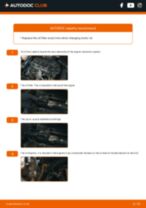

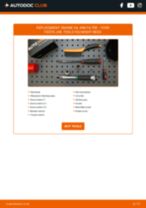
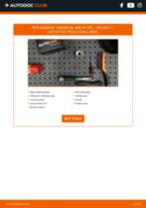
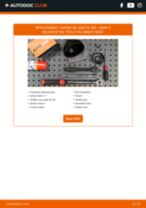

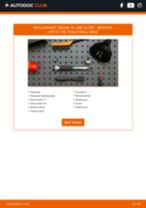

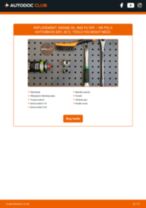

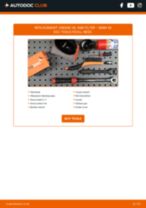
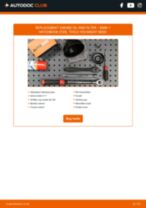

 Play all playlists
Play all playlists





















































